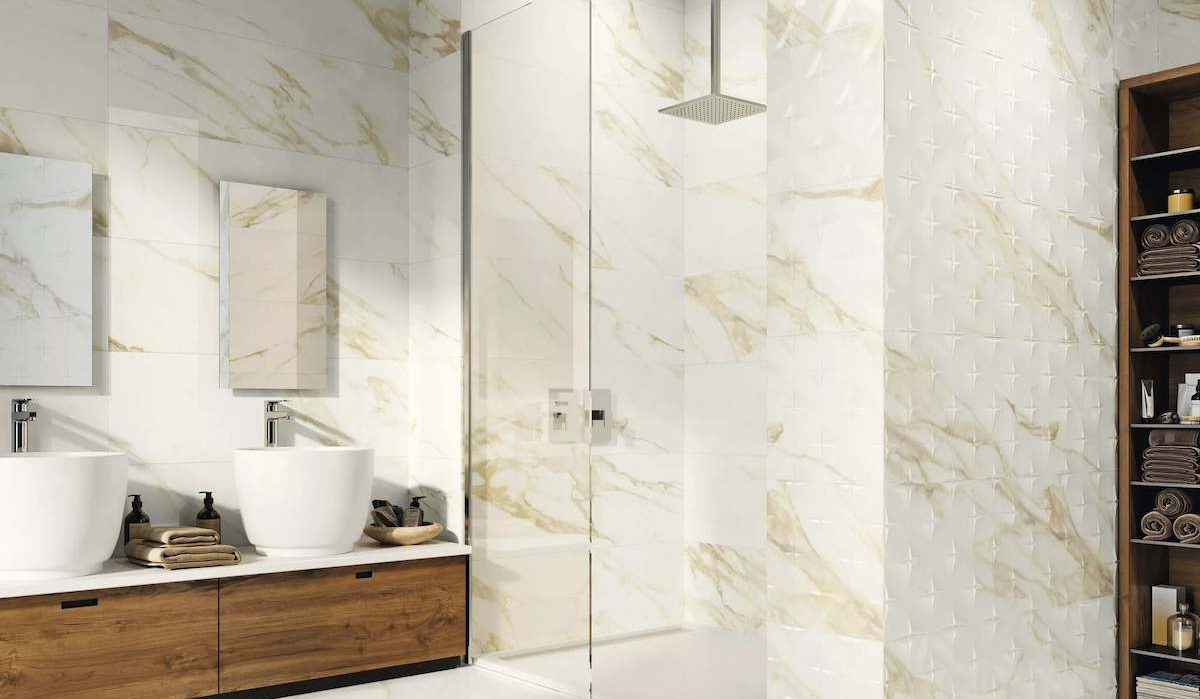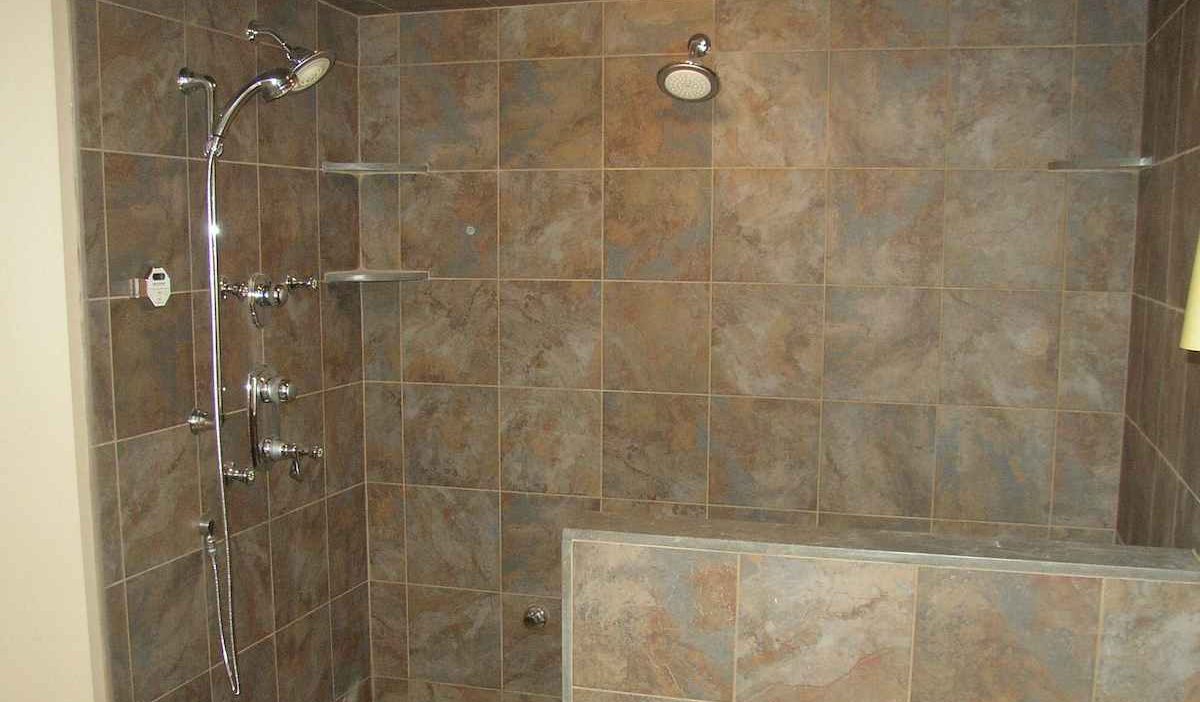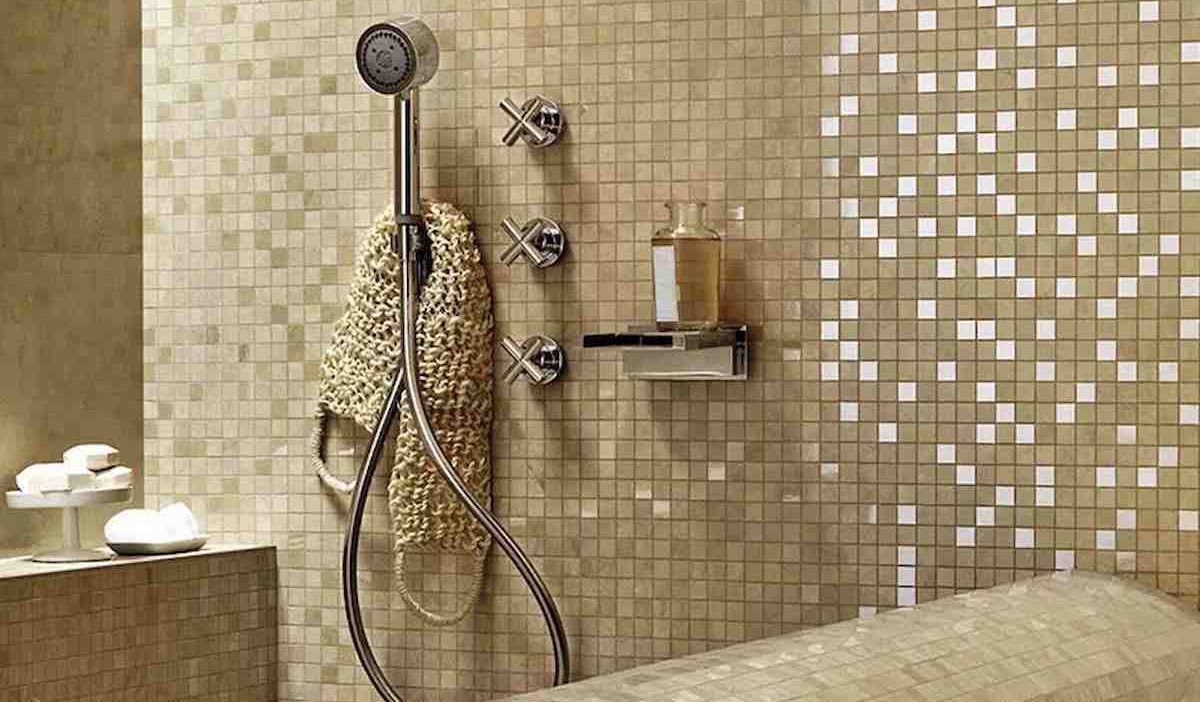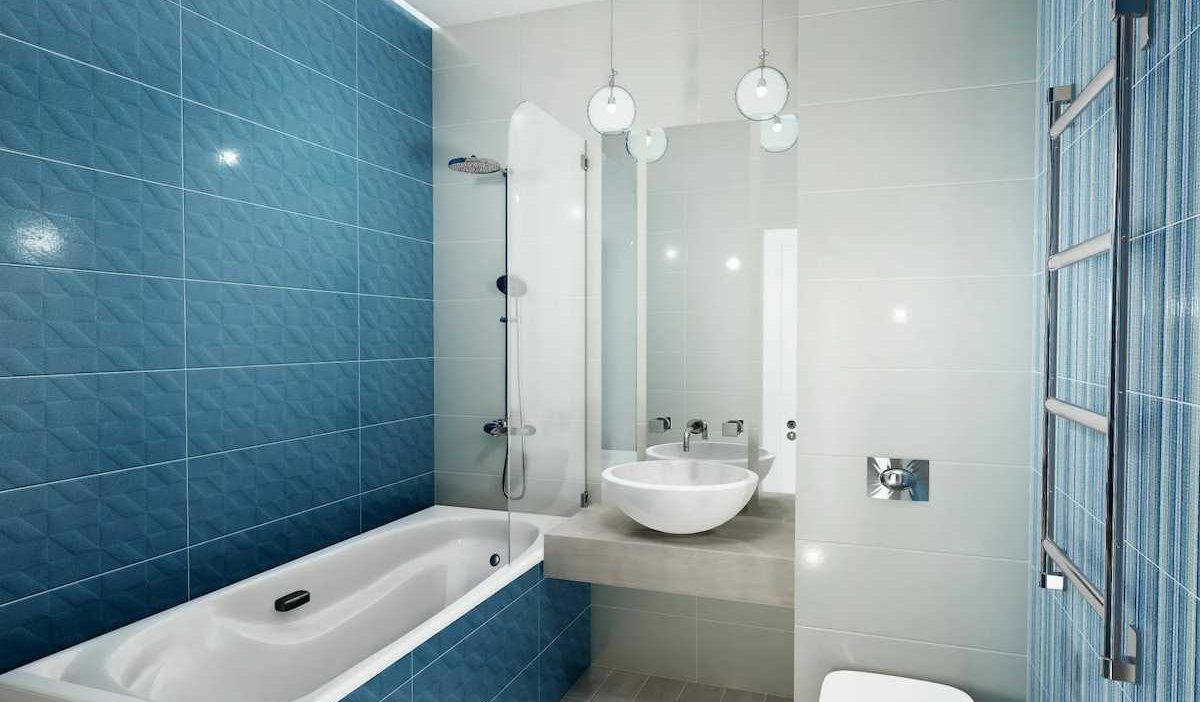Ceramic vs porcelain tiles are two types of tiles commonly used for contemporary shower wall and floor designs. Porcelain and ceramic tile differ considerably in terms of water absorption, cost, and durability, despite their superficial similarities. No need to worry if you're having problems picking between these tiles; we've conducted an exhaustive study on the benefits and drawbacks of porcelain versus ceramic. Because of their resistance to water, porcelain tiles are the preferred material for showers. Obviously, the shower is one area of your home that will frequently become wet. Slip-resistant ceramic tiles are available, however, they are always more porous than porcelain. Because of this, the majority of homeowners feel more comfortable installing porcelain tiles in their showers. Although porcelain is the preferred material for shower designs, slip-resistant ceramic tiles can also be utilized. Ceramic tiles are lighter than porcelain tiles, making them simpler to deal with and available in a larger choice of designs. In addition, ceramic tiles are often more affordable than porcelain ones. It is noteworthy to notice that both porcelain and ceramic are composed primarily of clay. The sole difference between these two types of tiles is their manufacturing process.  In contrast to ceramic tiles, porcelain tiles must endure extremely high temperatures during kiln firing. Porcelain's exceptional water resistance and durability stem from the increased labor involved in its manufacture. Obviously, the additional expense associated with burning porcelain at such high temperatures also contributes to the increase in price. However, porcelain typically outlasts ceramic because it is more durable. Ceramic tiles are more susceptible to breakage and chipping over time, so you may need to purchase replacement tiles at some point. As they are naturally resistant to moisture, porcelain tiles require less maintenance than ceramic tiles. It is rare that accidental spills will discolor porcelain. In fact, this is precisely why many homeowners select porcelain kitchen tiles. Porcelain tile is the best tile for showers, in my opinion. In addition to being as aesthetically beautiful as any other kind of tile, they provide the added benefits of high density and low moisture permeability. When shower wall waterproofing is of the utmost importance, these factors are crucial. Despite the fact that there are advantages to choosing ceramic over porcelain, a porcelain tile shower is typically preferable to a ceramic tile shower in my view. In the comparison that follows, I will assume that these tiles are being installed in a consistently moist environment. The primary contrast between porcelain and ceramic tiles is density. The density of a tile influences its permeability to moisture (more on this later) and its resistance to load stress.
In contrast to ceramic tiles, porcelain tiles must endure extremely high temperatures during kiln firing. Porcelain's exceptional water resistance and durability stem from the increased labor involved in its manufacture. Obviously, the additional expense associated with burning porcelain at such high temperatures also contributes to the increase in price. However, porcelain typically outlasts ceramic because it is more durable. Ceramic tiles are more susceptible to breakage and chipping over time, so you may need to purchase replacement tiles at some point. As they are naturally resistant to moisture, porcelain tiles require less maintenance than ceramic tiles. It is rare that accidental spills will discolor porcelain. In fact, this is precisely why many homeowners select porcelain kitchen tiles. Porcelain tile is the best tile for showers, in my opinion. In addition to being as aesthetically beautiful as any other kind of tile, they provide the added benefits of high density and low moisture permeability. When shower wall waterproofing is of the utmost importance, these factors are crucial. Despite the fact that there are advantages to choosing ceramic over porcelain, a porcelain tile shower is typically preferable to a ceramic tile shower in my view. In the comparison that follows, I will assume that these tiles are being installed in a consistently moist environment. The primary contrast between porcelain and ceramic tiles is density. The density of a tile influences its permeability to moisture (more on this later) and its resistance to load stress.  As previously stated, the choice between ceramic and porcelain tiles boils down to material density. Even though the densities of porcelain tiles vary widely, they absorb water more like glass than ceramic tiles. Consider a porcelain teacup that you might store in a kitchen cupboard. It repels water less effectively than glass, yet in a manner akin to glass. In contrast, ceramic tile absorbs water readily. There's a good chance you'll discover another beautiful example of this in the kitchen cupboard. The unglazed base of any ceramic mug will acquire a deeper hue when exposed to water. This indicates that it is absorbing water. It's not my recommendation that the top face of the ceramic tiles in your shower be unglazed like the bottom of your coffee mug, but it's a valuable illustration of the major difference between the materials used to make ceramic and porcelain tile. The glazing on the top surface of all ceramic items serves primarily to prevent the absorption of moisture. Regardless of coating, it will always be substantially more porous than porcelain. Consider that ceramic tile is far less dense than porcelain, making it more permeable to water if you're considering utilizing it in your shower.
As previously stated, the choice between ceramic and porcelain tiles boils down to material density. Even though the densities of porcelain tiles vary widely, they absorb water more like glass than ceramic tiles. Consider a porcelain teacup that you might store in a kitchen cupboard. It repels water less effectively than glass, yet in a manner akin to glass. In contrast, ceramic tile absorbs water readily. There's a good chance you'll discover another beautiful example of this in the kitchen cupboard. The unglazed base of any ceramic mug will acquire a deeper hue when exposed to water. This indicates that it is absorbing water. It's not my recommendation that the top face of the ceramic tiles in your shower be unglazed like the bottom of your coffee mug, but it's a valuable illustration of the major difference between the materials used to make ceramic and porcelain tile. The glazing on the top surface of all ceramic items serves primarily to prevent the absorption of moisture. Regardless of coating, it will always be substantially more porous than porcelain. Consider that ceramic tile is far less dense than porcelain, making it more permeable to water if you're considering utilizing it in your shower.  This may be a concern when designing a shower with tiles. When installing tile, the mortar's moisture level is necessary for a strong bond to the substrate and long-lasting durability. The backs of all ceramic tiles are hygroscopic, meaning they absorb water extremely rapidly. Consequently, they tend to drain water from mortar, making it more difficult to join and set properly. As the mortar dries, the ceramic absorbs its moisture, causing it to harden and become brittle. In addition, this results in the main and incredibly irritating problem of immovable tiles. There is nothing worse than having to adjust your tiles because the mortar is too stiff and dry, causing them to remain in place once they have been installed. If you've ever been in it, you know it's a terrible situation. Your ceramic tiles may potentially delaminate over time owing to insufficient bonding. If you wish to install ceramic tile in the shower, you may fix the permeability problem by applying a bonding agent to the unglazed back of the tile. By utilizing this method, the ceramic will be partially "sealed," allowing the tile to absorb just a little amount of moisture from the mortar. As a consequence, perfect tile adhesion, mobility, bonding, and mortar setting are made feasible. More effort is required, but it is undeniably beneficial. Ceramic tiles are the most durable option for covering walls and floors compared to other options.
This may be a concern when designing a shower with tiles. When installing tile, the mortar's moisture level is necessary for a strong bond to the substrate and long-lasting durability. The backs of all ceramic tiles are hygroscopic, meaning they absorb water extremely rapidly. Consequently, they tend to drain water from mortar, making it more difficult to join and set properly. As the mortar dries, the ceramic absorbs its moisture, causing it to harden and become brittle. In addition, this results in the main and incredibly irritating problem of immovable tiles. There is nothing worse than having to adjust your tiles because the mortar is too stiff and dry, causing them to remain in place once they have been installed. If you've ever been in it, you know it's a terrible situation. Your ceramic tiles may potentially delaminate over time owing to insufficient bonding. If you wish to install ceramic tile in the shower, you may fix the permeability problem by applying a bonding agent to the unglazed back of the tile. By utilizing this method, the ceramic will be partially "sealed," allowing the tile to absorb just a little amount of moisture from the mortar. As a consequence, perfect tile adhesion, mobility, bonding, and mortar setting are made feasible. More effort is required, but it is undeniably beneficial. Ceramic tiles are the most durable option for covering walls and floors compared to other options.  They are recommended for areas with damp floors. Numerous calamities, including exposure to sunlight, chemicals (in industries), and hot liquids, regularly expose floor tiles (in the kitchen). The capacity of ceramic materials to keep color ensures that the color or pattern will not fade. Throughout their existence, ceramics keep their aesthetic charm. Ceramics are recognized for their low maintenance requirements. Since trash, fluids, and other things remain just on the surface, they are easy to remove with a mop or vacuum cleaner. Given that porcelain tiles have a high water resistance, approximately 0.5% higher than ceramic tiles, they are quite similar to ceramic tiles. This is due to the density of the clay used to create porcelain tiles. In the past, porcelain was not utilized in the production of tiles.
They are recommended for areas with damp floors. Numerous calamities, including exposure to sunlight, chemicals (in industries), and hot liquids, regularly expose floor tiles (in the kitchen). The capacity of ceramic materials to keep color ensures that the color or pattern will not fade. Throughout their existence, ceramics keep their aesthetic charm. Ceramics are recognized for their low maintenance requirements. Since trash, fluids, and other things remain just on the surface, they are easy to remove with a mop or vacuum cleaner. Given that porcelain tiles have a high water resistance, approximately 0.5% higher than ceramic tiles, they are quite similar to ceramic tiles. This is due to the density of the clay used to create porcelain tiles. In the past, porcelain was not utilized in the production of tiles.  During the fifteenth century in China, porcelain wall tiles were produced and employed. Since then, production procedures for porcelain tiles have been upgraded. To make the products more accessible to the average household, they have been streamlined. Because porcelain tiles contain fewer air pockets, denser clay, and a thicker, more rigid structure, they have a reputation for lasting longer than ceramic tiles. Frequently, changes in the climate can pose problems for homes. In colder areas, ceramic tiles are more likely to shatter or crack due to freezing. This problem is less likely to occur with ceramic tiles. The cause is that the tiles are more uniform and less permeable than other tiles. Some individuals even utilize them as exterior decorations to determine their efficacy. However, their application in interior design is only recommended. High-quality ceramic and porcelain tiles are available for bathroom and shower designs, contact our sales managers and receive the latest updates.
During the fifteenth century in China, porcelain wall tiles were produced and employed. Since then, production procedures for porcelain tiles have been upgraded. To make the products more accessible to the average household, they have been streamlined. Because porcelain tiles contain fewer air pockets, denser clay, and a thicker, more rigid structure, they have a reputation for lasting longer than ceramic tiles. Frequently, changes in the climate can pose problems for homes. In colder areas, ceramic tiles are more likely to shatter or crack due to freezing. This problem is less likely to occur with ceramic tiles. The cause is that the tiles are more uniform and less permeable than other tiles. Some individuals even utilize them as exterior decorations to determine their efficacy. However, their application in interior design is only recommended. High-quality ceramic and porcelain tiles are available for bathroom and shower designs, contact our sales managers and receive the latest updates.
💰 Tenfold your income 💎
